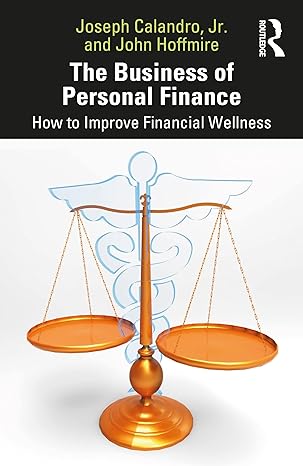Question
An investor is willing to purchase a property for $850,000. The investors equity investment is $170,000 and the balance will be financed by a 25-year
An investor is willing to purchase a property for $850,000. The investors equity investment is $170,000 and the balance will be financed by a 25-year fixed interest rate mortgage loan with a nominal interest rate of 4.0% per year. The loan is fully amortising, and the mortgage payment is made on an annual basis (interest is compounded annually). The expected annual rent of the property in year 1 is $50,000, which is expected to grow by 4.0% per year for the next 2 years. The operating expenses (non-reimbursable) of the property are $3,000 in year 1, which is expected to grow by 2.5% per year for the next 2 years. All incomes are accrued, and expenses are incurred at the end of each year. Assume the property is purchased at the end of the current year, year 0. The price of the property is expected to grow by 6.5% per year for the next 2 years. The investor is expected to hold the property for only 2 years, i.e. the investor will sell the property at the end of year 2. The selling expense due to agency and legal fees will be $8,000. There is a flat tax rate of 32% applicable to both the annual income of the property and the capital gain from the sale of the property. However, the interest payments from the mortgage loan are tax deductible (i.e. taxable income is net of interest payments; taxable income does not include interest payments). The selling expense is deducted when realising the capital gain of the property at the point of sale. For simplicity, assume that there has been no depreciation of the property during the period of investor ownership. Based on the above information, answer the following questions (answers should be to two decimal places):
1) Construct the amortisation table for the mortgage loan for each of the years 02. The amortisation table should include mortgage, interest and principal payments, and loan balance for the period of ownership.
2) How much capital gain tax will the investor pay when the investor sells the property at the end of year 2?
3 )Assuming a 3% market interest rate, calculate the modified internal rate of return (MIRR) of the property using after-tax cash flows for years 02 of the investment.
Step by Step Solution
There are 3 Steps involved in it
Step: 1

Get Instant Access to Expert-Tailored Solutions
See step-by-step solutions with expert insights and AI powered tools for academic success
Step: 2

Step: 3

Ace Your Homework with AI
Get the answers you need in no time with our AI-driven, step-by-step assistance
Get Started


